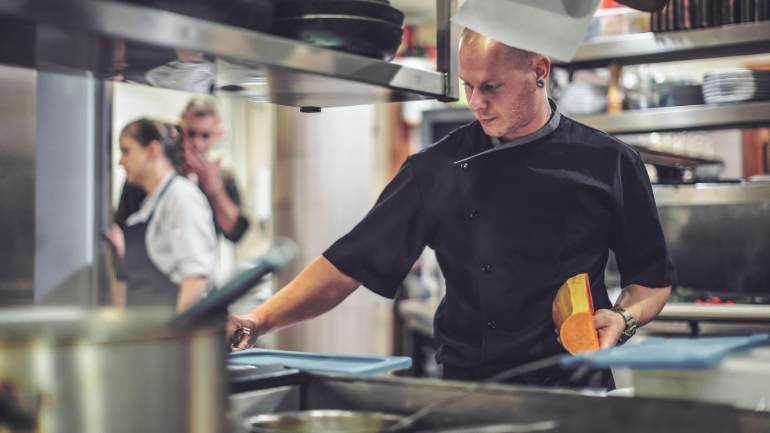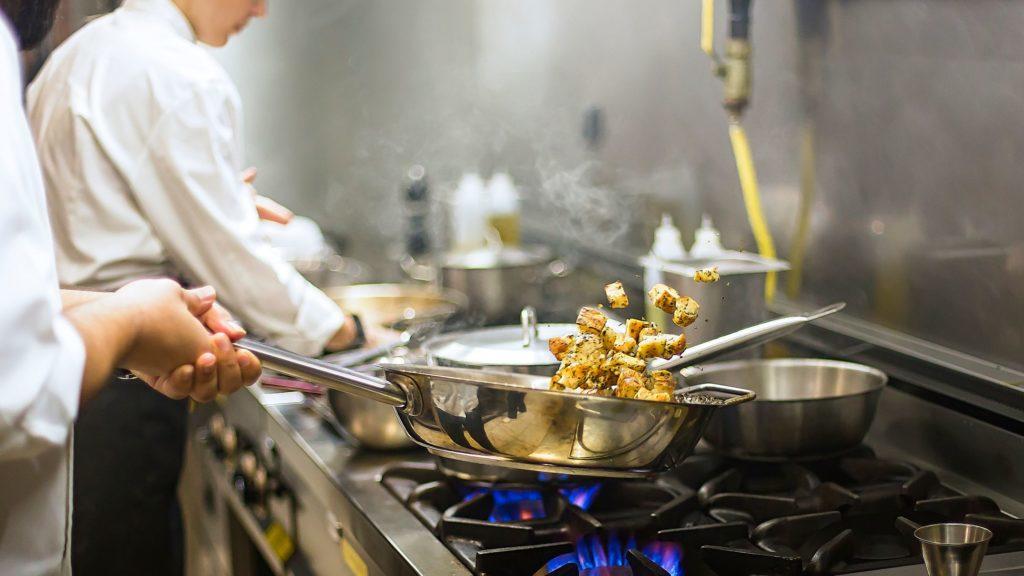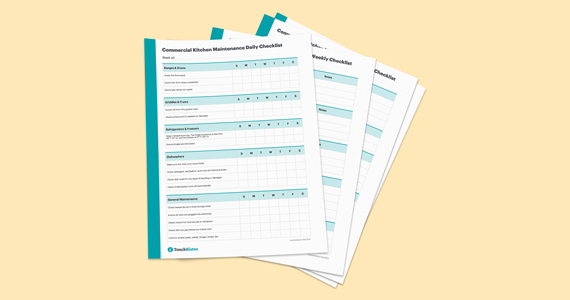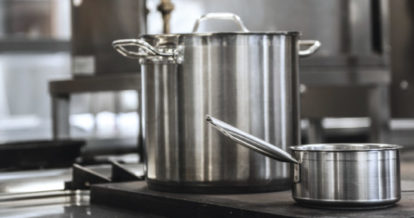Running a restaurant is an expensive business venture, and not every restaurateur can afford to purchase new equipment or kitchen technologies outright. As a result, many turn to restaurant equipment financing to ensure they have the commercial kitchen equipment needed to run a successful business.
Of course, many business owners are wary of debt financing, because debt is a scary word that implies risk and the threat of bankruptcy. And although it’s true taking on business loans and debt can be a risky endeavor, you can mitigate your risk and explore ways in which debt in the short term ends up paying for itself in the long term.
For restaurateurs, equipment financing is one of the best debt financing options – you just need to do a little homework before pursuing this type of funding. So to help you easily navigate the world of restaurant financing for equipment, this article will cover how this type of funding works, how restaurants can use it to their advantage, and what other financial avenues and resources might be available, just in case.
What Is Restaurant Equipment Financing?
Restaurant equipment financing is a form of debt financing that helps business owners access capital to pay for 100% (or close to it) of a crucial asset for their business.
The idea is that a lender gives you the exact amount a piece of restaurant equipment costs so you can buy that restaurant equipment right away. You then repay that amount, plus interest, over the expected life of the equipment.
As far as financing goes, this form of obtaining funding is fairly easy and straightforward for a small business. What makes it so coveted by restaurant owners?
- The loan is self-secured: The equipment itself acts as collateral, so if the borrower defaults on the loan, the lender simply takes the equipment back as repayment.
- The loan requirements aren’t stringent: Applying for bank loans typically requires meeting strict criteria, such as high personal and business credit scores and strong profit margins. Because equipment financing is self-secured, most businesses qualify.
- The loan is exactly what you need: Whereas, if you wanted business loans to pay for your restaurant equipment list, you might need to take out an amount that far exceeds your actual needs.
- The loan is fast: You can apply for this type of restaurant financing online and receive it in as little as one business day.
These are the basics of an equipment financing loan. The specifics will depend largely on the type of equipment you need (from a prep table to restaurant POS hardware), who is lending you the money, and your financial situation.

Is Equipment Financing the Best Funding Option for My Business?
In a vacuum, kitchen equipment financing sounds like the best deal for any restaurant that has equipment needs that the business can’t meet without crippling its cash flow.
To determine whether you’d want a restaurant equipment loan, however, you’ll have to understand the typical loan qualifications, the costs of the loan and restaurant maintenance, the pros and cons, the tax implications, and whether financing is better than leasing in the long term.
Typical Equipment Finance Qualifications
The qualifications for this kind of financing are less stringent than a traditional bank loans. That doesn’t mean just anybody can apply for and receive equipment financing – at least not with an annual percentage rate (APR) that makes sense for the bottom line.
Typically, businesses that qualify for equipment financing have:
- Over $130,000 in annual revenue
- A personal credit score of at least 630
- A time in business of at least two years.
There are equipment financing options for startup businesses, too. If you have a new restaurant and need funding to get your operation off the ground, this is a more viable option for you than applying for a bank loan or SBA microloan.
Typical Financing Costs for Restaurant Equipment
What your financing will cost depends on the cost of the restaurantequipment you need. Whether it’s a new point of sale system, an industrial fridge, or a prep table, you can typically find a lender who will front you the cash to make the equipment purchase.
Interest rates tend to run from 8% to 30% for various kitchen equipment financing loans. You’ll continue to make payments on the equipment for a predetermined set of time – typically for the useful life of the asset, but not for more than 10 years.
A well-established business with an elite credit score may see lower interest rates than startups with less-than-stellar credit scores.

Financing vs. Equipment Lease
How does financing your equipment differ from leasing it?
As you might expect, the main difference is that at the end of your financing agreement, you will own your equipment outright. With a lease, you don’t own the equipment – you simply pay to have access to it.
Depending on your restaurant equipment needs, there are times when leasing equipment may make more sense. If the equipment you need is being constantly updated, you may find that at the end of your financing repayment period, you own useless equipment. Additionally, with financing, you may need to supply a down payment upfront to your lender, which isn’t the case with a lease. Finally, leased restaurant equipment may be tax deductable depending on how the IRS categorizes your lease agreement.
On the other hand, if you have the money for a down payment and expect this restaurant equipment to be a mainstay of your kitchen, the interest payments you make each month will be less than a lease payment, with the added bonus of owning your equipment outright at the end of the process.
Cash Flow Considerations
The question with any kind of financing is whether your business can afford the new cash flow responsibilities of making monthly (or sometimes weekly) payments on your new equipment.
Annual and monthly revenue is a consideration for lenders, who want to make sure you have enough wiggle room to comfortably pay them back and maintain your typical business operations. But not every lender will scrutinize your books to the same extent, so it will be up to you to run the numbers and decide what is feasible for your business.
On the other hand, restaurant financing usually comes into play when a restaurant truly needs a replacement or an equipment upgrade. Can your restaurant survive without this new restaurant equipment until you have the cash to purchase it outright?
Business Loans and Other Funding Alternatives to Equipment Financing
Equipment financing isn’t the only source of funding available to restaurant owners in need of new equipment. There are a variety of lending options – from banks and online lenders. You may find some are a better option for you, or you might want to explore a combination of equipment financing and other funding resources to meet all your needs.
Assuming you have good credit and a lengthy time-in-business – at least two years is the minimum, but the more the better – these are the 5 most common funding options typically available to you:
1) Traditional Term Loan
When you think of a loan, you’re probably thinking of this: A lender extends you a set amount of money, which you pay back in regular installments plus interest. Term loans from banks will offer the absolute best rates – but bank loans are notoriously difficult to obtain and the process can take months. Only the most profitable and stable businesses will be considered.
You may also qualify for a loan product from an online lender. Online lenders typically have quicker turnarounds and lower standards than banks, but their interest rates are higher as a result.
2) Personal Loan
You can use a personal loan for your restaurant financing needs. This is a good option if you have a limited business history and would otherwise need to take out an expensive short-term loan. The major downside is that the total loan amount will likely be lower than what you would get for a business loan. Additionally, your personal credit will take a hit if you fail to repay the loan.
3) Business Line of Credit
A line of credit is similar to a credit card. You gain access to a pool of money, which you can draw from as needed. You only pay interest on the amount you use and can draw on the line as many times as necessary until the line is closed.
Business owners prize a line of credit because of their flexibility. Once you’re approved, you can keep the line in your back pocket until a sudden need arises, such as broken restaurant equipment. Interest rates may be relatively low as well, depending on the borrower’s situation.
4) Credit Cards
Most people don’t think of credit cards as funding resources, but they function as short-term loan products with the added bonus of accruing points and rewards for further reinvestment.
Depending on your credit score, you may qualify for a credit card with a 0% APR throughout an introductory period, typically a year. That’s essentially an interest-free loan throughout the life of your offer – an unbeatable rate.
5) Merchant Cash Advance
Although not actually a loan, a Marchant Cash Advance (MCA) is a very similar product. A financing company will give you cash and take repayment in the form of a cut of your daily credit card and debit card sales, plus a fee.
MCAs don’t require borrowers to have strong financials. Because the lender only takes back a percentage of your sales, if your business has a slow day, you won’t find yourself falling behind on your payments.
Interest rates for MCAs, however, are usually extraordinarily high, and can go into the triple digits. MCAs use “factor rate” to calculate what you need to repay. Most factor rates are usually between 1.1 and 1.5, and when you multiply your loan by your factor rate, you get the amount you have to repay on top of your loan principal. Factor rates are used instead of interest rates because they can seem low, but translate to large dollar amounts over time.
As a result, an MCA should only be considered as an absolute last resort for funding. The barrier to entry is low, but the cost can be fatally high.
The Right Choice for Your Restaurant Equipment Needs
Whether you’re new to the concept of restaurant financing, or have used (and maybe even been burned by) business loans in the past, financing your equipment is an excellent place to start a new era of using loans responsibly.
Going into debt is always a risk, and you’ll need to crunch your restaurant budget numbers to make sure that this short-term loss ends up in a gain for your new or existing restaurant.
But there is another benefit to utilizing such a product. If you repay your restaurant equipment loan on time, your business credit score will improve. You’ll set yourself up for future funding success, including other forms of financing with even lower rates and more generous terms, such as highly coveted SBA loans.
If you’ve got a restaurant equipment need, this type of financing is responsible, not overly expensive, and a stepping stone to even better options. What else could you ask for when your fridge is on the fritz?

Use this kitchen equipment maintenance checklist to help extend equipment life, reduce utility consumption, and prevent unexpected breakdowns.
Download our free inventory template
Sign up for our free weekly TouchBistro Newsletter







